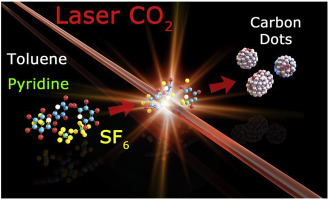U29-E05. Spectrofluorimeter equipped with a Peltier temperature gradient.
Spectrofluorimeter equipped with a Peltier temperature gradient to run thermal denaturation assays and characterization of DNA-binding drugs followed by fluorescence.
Spectrofluorimeter equipped with a Peltier temperature gradient to run thermal denaturation assays and characterization of DNA-binding drugs followed by fluorescence.
UV-Visible spectrophotometer equipped with a Peltier temperature gradient to run thermal denaturation assays followed by UV absorption.
Speed-Vac evaporators for removal of water in oligonucleotide samples
Analytical and preparative high-performance liquid chromatography (HPLC) system with a diode array detector.
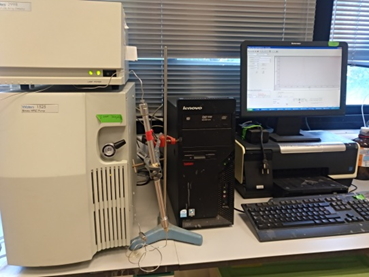
Automatic synthesizer which can be operated at a range of scales (40, 200, 1000 nanomols). A large variety of monomers can be incorporated using the phosphoramidite methodology such as natural and modified DNA, RNA monomers as well as fluorophores and other modifications.
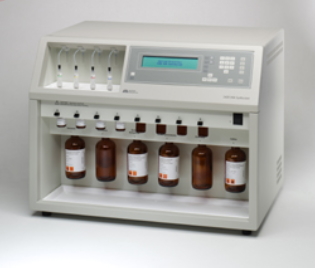
This service is dedicated to the custom synthesis of modified oligonucleotides including phosphorothioate linkages, 2’-O-methyl-RNA, 2’-O-MOE-RNA, 2′-F-RNA, Locked nucleic acids (LNA), modified nucleotides and several others. The oligonucleotides will be prepared on a 1 micromol scale. Purification and characterization will include reversed-phase HPLC analysis and mass spectrometry (MALDI-TOF).
Synthesis of oligonucleotides at various different scales (100 microg to 5 mg) and purification using HPLC and/or desalting.
Customer benefits
The service benefits from the 40-years’ experience of the researchers involved in the service, with hundreds of scientific communications on improving the methodology used for the synthesis of modified oligonucleotides. This expertise includes a range of modified nucleotides and terminal modifications that are not available in other services. In addition, the service can develop customized solutions for molecules not covered in the bibliography.
Target customer
The primary audience are research groups and companies involved in mutagenesis, gene therapy, gene inhibition, the development of nucleic acid-based diagnostic tools, or the study of nucleic acid structure and nucleic acid-protein interaction.
References
1) “Detection of SARS-CoV-2 virus by Triplex Enhanced Nucleic Acid Detection Assay (TENADA)”, Aviñó, A., et al. Int. J. Mol. Sci., 23, 15258 (2022).
2) “Properties of parallel tetramolecular G-quadruplex carrying N-acetylgalactosamine as potential enhancers for oligonucleotide delivery to hepatocytes”. Clua, A. et al. Molecules, 27, 3944, (2022).
3) “Chemical modifications in nucleic acids for therapeutic and diagnostic applications”. Fàbrega, C., Aviñó, A., Eritja, R. The Chemical Record, 22, e202100270 (2022).
The Spanish Higher Council for Scientific Research (CSIC) will finance the project Point-of-care tests for the rapid detection of SARS-CoV-2 (POC4CoV), whose objective is to have effective diagnostic technologies for Covid-19. The Institute of Microelectronics of Barcelona (IMB-CNM-CSIC), the Institute of Advanced Chemistry of Catalonia (IQAC-CSIC) and the Institute of Materials Science of Aragon (ICMA) participate in it.
The POC4CoV project aims to develop Point-of-Care (POC) devices for the in vitro diagnosis of SARS-COV-2 infection quickly and reliably, thanks to the use of multiplexed systems and the use of particular biomolecular probes. To do this, POC technological platforms will be used in combination with specific capture biomolecules and nanobiotechnological probes (enzyme bioconjugates and biofunctional plasmonic and magnetic nanoparticles), which will allow the simultaneous detection of different biomarkers (viral RNA and antigens, IgM and IgG) related to Covid-19 disease. The biomolecular complexes will be collected at specific points on the devices where the electrochemical or optical signals will be recorded.
The developed POC platforms will undergo analytical and clinical validation in a clinical setting.
Three units of NANBIOSIS (form CIBER-BBN and IQAC-CSIC) will will take an active participation in the project.
NANBIOSIS Unit 2 Custom Antibody Service (CAbS), will produce antibodies against the Spike protein and other virus proteins, trying to maximize the recognition of those epitopes that differentiate SARS-CoV-2 from other Coronaviruses
NANBIOSIS Unit 3 Synthesis of Peptides Unit will synthesize peptidic sequences that will allow to identify towards which epitopes the immune response is directed, which will allow to develop more specific diagnostic methods.
NANBIOSIS Unit 29 Oligonucleotide Synthesis Platform (OSP) has designed probes with oligonucleotide sequences that will allow the capture of viral RNA through the formation of high affinity triplex complexes
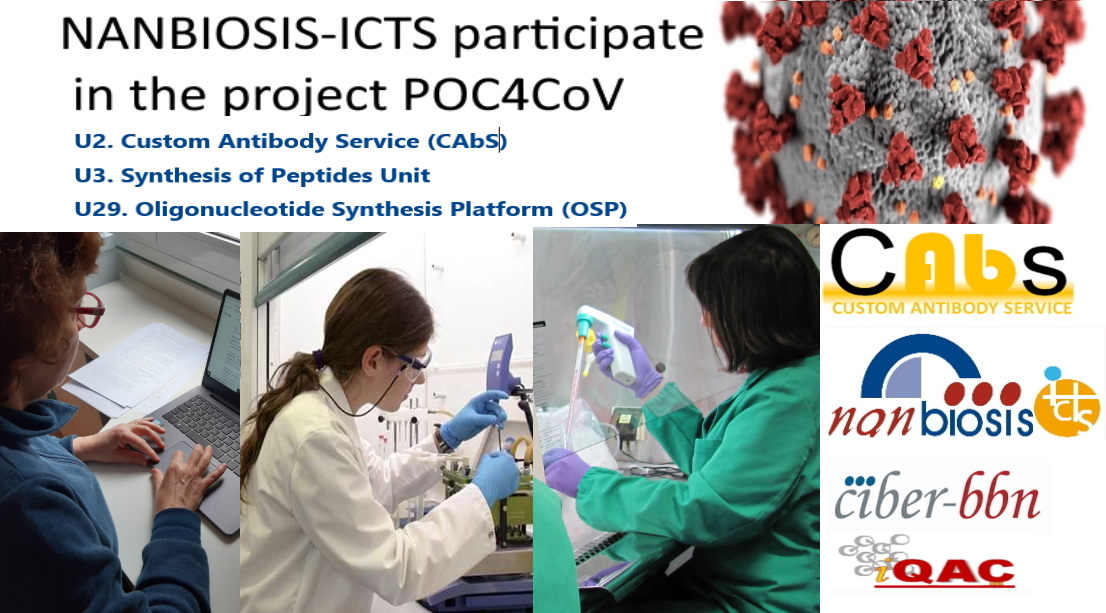
The Malaga Academy of Sciences has published an interesting review by Dr. José Becerra Ratia on Spanish biomedical research in relation to COVID-19 virus and, in particular, with two therapeutic novelties that have stem cells as protagonists, in one case the mesenchymal cells and in the other case the embryonic ones.
Professor Becerra is Professor of Cellular Biology at the University of Malaga and Vice President of the Malaga Academy of Sciences, as well as Researcher in charge of the Bioengineering and Tissue Regeneration Laboratory that belongs to BIONAND, IBIMA CIBER-BBN and TerCel (unit 28 of NANBIOSIS U28 Nanoimaging Unit)
Dr Becerra, enfasizes how the development of Biology in recent decades as well as the powerful tools provided by molecular biology and artificial intelligence, will be very useful now to combat Covid-19 Pandemia.
Here you can read the article in Spanish, Science, a well-founded hope against COVID19
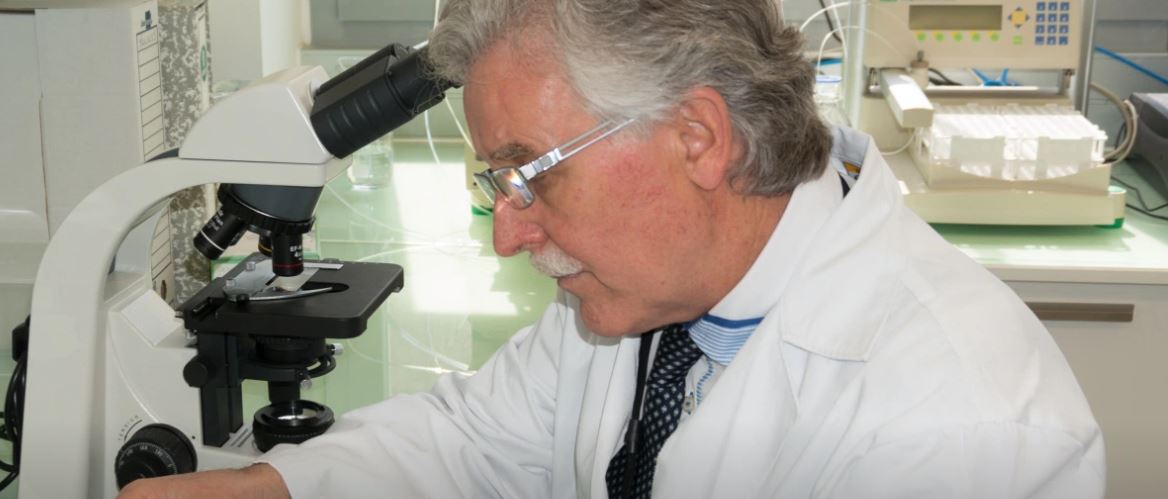
Due to the current pandemic outbreak of COVID-19, caused by the SARS-CoV-2 virus, knowledge about the virus characteristics and the development of its possible diagnostic, treatment and prophylactic devices and systems are high priority in all research institutions worldwide.
NANBIOSIS assigns high priority to the projects related to the SARS-CoV-2 virus offering preferential access. Some of the NANBIOSIS’s services have been suspended or postponed. However the call is open and the proposals will be processed and services required will be provided as soon as possible.
For that purpose, A “COVID-19 Rapid Access” call has been established, valid through the year 2020. Urgent procedure will be applied to review and admission of the proposals.
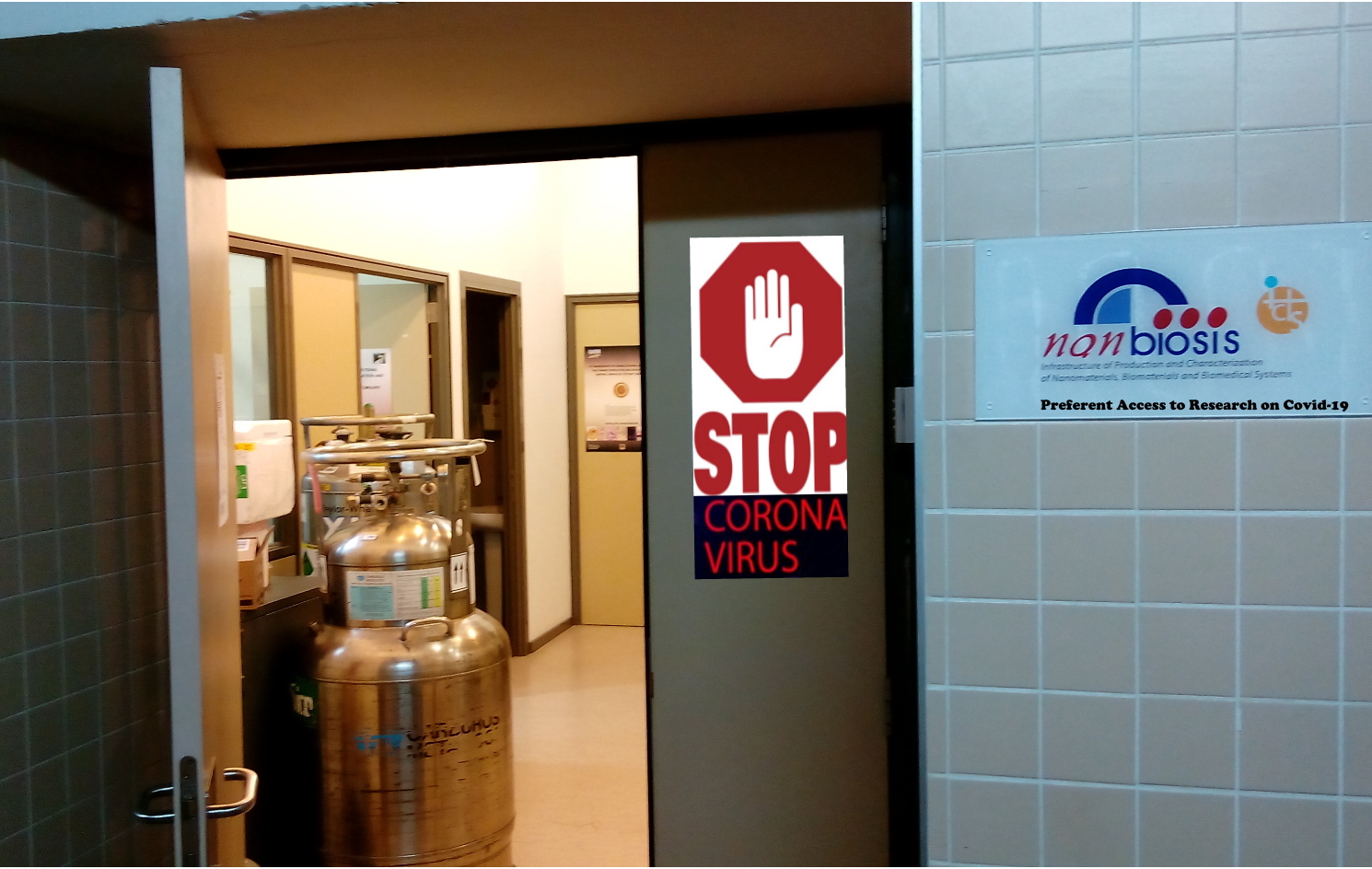
Researchers of NANBIOSIS U9 Synthesis of Nanoparticles Unit, present the first successful synthesis of monodisperse carbon nanodots (CNDs) with tunable photoluminescence (PL) carried out by laser pyrolysis of two common volatile organic precursors such as toluene and pyridine. Remarkably, the initial chemical composition of the precursor determines the formation of undoped or N-doped CNDs and their corresponding absorption response in the visible range (expanded for the latter). Researchers have demonstrated the control and versatility of this synthesis method to tune the final outcome and its potential to explore a great number of potential solvent candidates. Furthermore, they have successfully exploited these CNDs (both undoped and N-doped) as effective sensitizers of TiO2 nanoparticles in the visible-light driven photo-degradation of a cationic dye selected as model organic pollutant.
The synthesis of these nanomaterials has been performed by the Synthesis of Nanoparticles Unit of the ICTS “NANBIOSIS” (CIBER-BBN) at the Institute of Nanoscience of Aragon (INA)-Universidad de Zaragoza.
Article :
Nuria Mas, Jose L.Hueso, Gema Martinez, Ainhoa Madrid, Reyes Mallada, M. Carmen Ortega-Liebana, Carlos Bueno-Alejo, Jesus Santamaria. Laser-driven direct synthesis of carbon nanodots and application as sensitizers for visible-light photocatalysis. Carbon 156 (2020) 453e462
